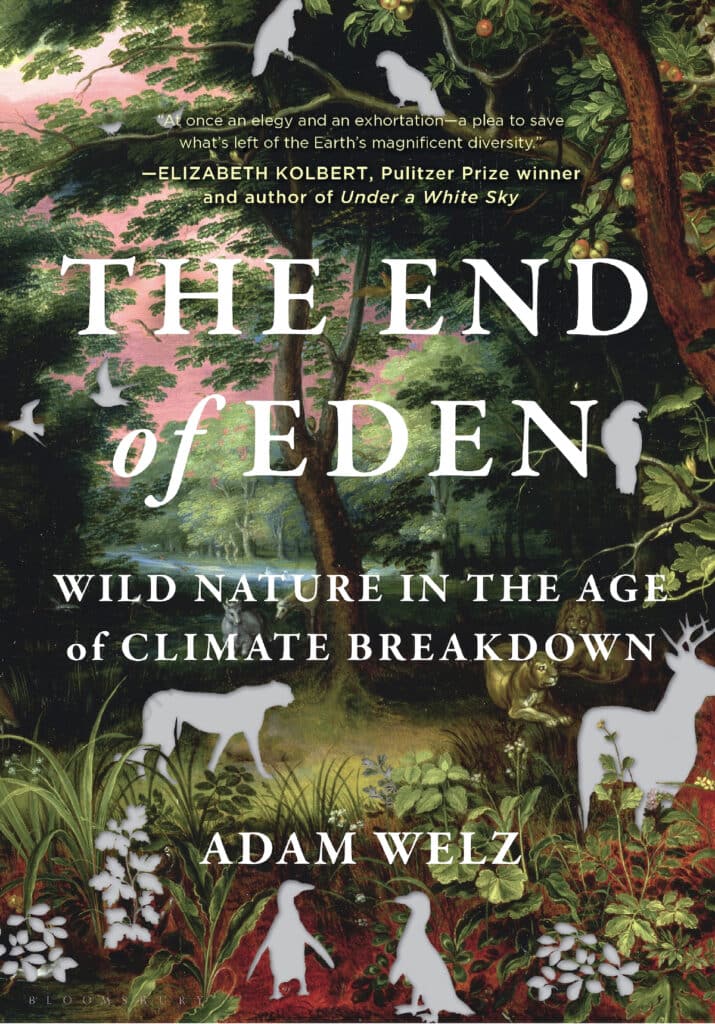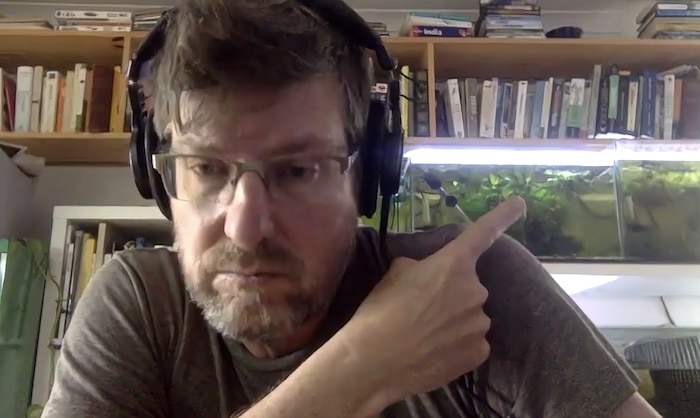Ecowatch
‘It’s Got to Be a Fight’: Author Adam Welz on Surviving Climate Breakdown and Saving Species of a ‘Tarnished Eden’

Adam Welz’s The End of Eden is an extraordinary document of a planet under stress. Taking a deep dive into the scientific history of our planet, Welz brings the research into the moment by exploring how species around the world are being forever altered or eliminated, in ways that few people are aware.
“Humans have been performing an uncontrolled experiment on this fragile, life-giving cocoon,” Welz writes in the book’s introduction, referring to Earth as a “tarnished Eden.”
Welz writes about places he’s traveled to, as well as ones he extensively researched, including the Mojave Desert, Puerto Rico, Hawaii, the Galapagos Islands, New Jersey’s Pine Barrens, and areas close to his home in Cape Town, South Africa.
Welz looks mostly at microclimates and how “these intimate ecological breakups and breakdowns are of no less consequence than the so-called natural disasters.” It’s an exploration of the science of phenomena like thermal heat and CO2, and a painfully real one, considering how plagues, extreme weather, migration, fire and other events have affected the delicate ecological balance of Earth and mammals like the white-throated woodrat, honeycreepers in Hawaii, and land tortoises, among others.
But Welz sees hopeful adaptations as well. “Some species will colonize habitats, areas, and communities that they have never lived in before,” he says. “Climate change is scrambling natural communities and creating new combinations of species — new ecosystems — almost everywhere we look.”
EcoWatch spoke with Welz from his home in South Africa, where he’s busy working on a book about the history and future of nature conservation.
The level of research in the book is stunning. What was the challenge in putting that all together?
I’m constantly picking up stories and bits of information, just kind of filing them away. The book could have been way longer, but I picked the stories that I liked the most, that I thought best described or best illustrated the phenomena that I’m trying to get at.
Which is what? What might be the overall theme of The End of Eden?
What the problem that this book is trying to solve is that when you read about climate breakdown in general in the media, nearly all of it is focused on humans — what does it mean for us. Very little is focused on millions of other species that happen to share the planet with us. I picked particular species, I’ve told their stories, and I’ve sort of almost built them as characters. And once you understand the why a little more, I’m hoping you’ll be able to take the story I’ve just told you and realize as a reader that this is the same kind of thing that’s happening to species in lots of other places.
Would you say the eight chapters describe the eight major stressors on the climate?
No, it’s very hard to say that. I would just say that these are themes that made sense to me. Each chapter looks at this particular kind of phenomenon, and it tries to explore it and explain it through these examples of these different species. For example, I have a chapter on fertile air, which is how the increase in concentration of carbon dioxide in the atmosphere is driving the woodification of savannas around the world. They’re turning into essentially low-grade forests in large parts of the world. And that’s, I think, something very few people have thought about, you know, CO2 fertilization.
You write about the Key deer in Key West. How is that an example of the kind of research you did?
They’ve evolved to become these very cute mini-deer, but they’re absolutely dependent on freshwater resources on these small coral islands that make up the Keys. And these freshwater resources are, as sea level rises, becoming saltier and saltier. And with the hurricanes getting more intense and storm surges now washing right up over these islands, we’re looking at the end of the Key deer. Some of the projections are that within decades, well before 2100, the Florida Keys will not have any suitable habitat for the Key deer anymore. And again, it’s an example of how close to the edge a lot of species actually are.
I try and illustrate in some of these stories that these tiny little incremental shifts in maximum and minimum temperatures, or the length of a season just by a couple of days here and there, can actually have these massive effects on species, and then in turn have massive effects on ecosystems and affect large, large areas. I think that the key thing is to be aware of the impact.
You visited the Kosciuszko National Park after the massive Dunns Road fire there in 2020. You wrote, “I was stunned by what I saw. A dense mass of thousands, millions, of dead trees filled the landscape from horizon to horizon. The forest was the brown of dead wood and the black of charcoal. It smelled of ash and burned oil. I had never seen a place so thoroughly and extensively burned.” What impression did that make on you?
I’ve seen a lot of fires in my life. I’m used to fires, and like I say in the book, fires don’t scare me. They’re totally normal in loads of ecosystems. I was absolutely shocked by what I saw in the sense that I had never seen an area that large that had been so thoroughly burned. The forest floor in most places was completely bare. The fire had been so hot that it burned right through all the organic matter, it had been burned out of the soil. Everything was just like dead sand underneath these dead trees.
A single fire, instead of being just a sort of a phase in that forest’s life, just deletes the forest, and it’s then replaced by a scrubland or a grassland or something. You have this massive shift in the nature of that ecosystem essentially overnight. And to see it on the scale that I saw in Australia — I really felt, like I say in the book, I felt like I was seeing the future. It’s like, all right, this is where we’re going, folks. This is a whole different thing. This is something brand new.
On a more personal level, you have a fish tank with some endangered catfish from Peru. It’s a very small thing, but how does that help?
Both of these species have had nearly all their riverine habitat in Peru destroyed by illegal gold mining, and there’s a tiny handful of people around the world that keep these fish. Conservation’s not all about these multi-million dollar projects to save huge animals like rhinos and what have you from extinction.

Author Adam Welz points to his fish tank with endangered catfish from Peru.
Some of the book’s research really points to some unalterable changes in species. How does one avoid that kind of psychological climate change dread?
I get people saying to me, I’m scared to read your book because I might get depressed or something. It’s like, well, yeah, that happens to me. And I think, you know, well, this is what’s going on, folks. And you can either pretend it isn’t there or you can deal with it. And if it changes you, if it marks you, well, that’s what it’s going to do, because this is what’s happening. And that’s actually okay, even though it is difficult.
There’s all sorts of things that are just truly bleak and there are solutions, but the political opposition to those solutions at the moment is ferocious. And if we are really going to do something substantial about climate breakdown and the extinction crisis, it’s going to be a fight. There are very strong entrenched interests who want to carry on with fossil fuels and want to carry on with rampant destruction of ecosystems, because they’re making a lot of money out of it. It’s got to be a fight. It’s not going to solve itself. It’s not going to be because people have the right ideas. You know, if any change is going to come, it will be through action.
Source
Disclaimer: No copyright infringement intended. All rights and credits reserved to respective owner(s).












